Cheese Soufflé: Simply Elegant
What is a cheese soufflé? It sounds fancy and is impressive to serve, yet is very easy to make. Learn the best cheese for soufflé and what to serve with it.
The cheese soufflé. Just the thought inspires visions of fine French cuisine. In the restaurant, it is whisked quickly to the table so it doesn’t collapse, delicately and proudly puffed like the toque atop the head of a cordon bleu chef. Inside is a texture so light and airy it will put a cream puff to shame, along with the salty, savory tang of a fine aged cheese. Surely something this opulent is fussy in the extreme; only those rigorously trained professionals could know how to make a soufflé. “Mais non, mes amis; c’est façile!” (That’s French for “nah, it’s easy.”)
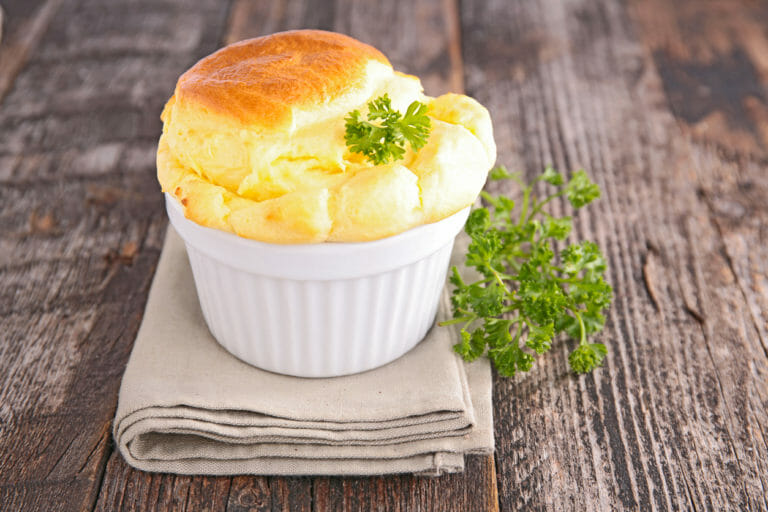

How do you pronounce Soufflé?
The word “soufflé” is typically pronounced in English as “soo-flay.” The first syllable, “soo” rhymes with “goo” or “blue,” and the second syllable, “flay” sounds like the word “flay” or “say.” You may occasionally see various spellings (or, misspellings) of “soufflé” like “süfle” or “soufflet”; however, the pronunciation remains the same.
What Is Cheese Soufflé?
Basically, cheese soufflé is a white sauce with eggs: first enriched with the yolk and then made fluffy with beaten whites. And it doesn’t have to be a cheese soufflé; other soufflés are made with chocolate, or other flavorings like vegetables and fruits. But our favorite, by far, is cheese soufflé. And for a proper cheese soufflé, you need the right cheese.
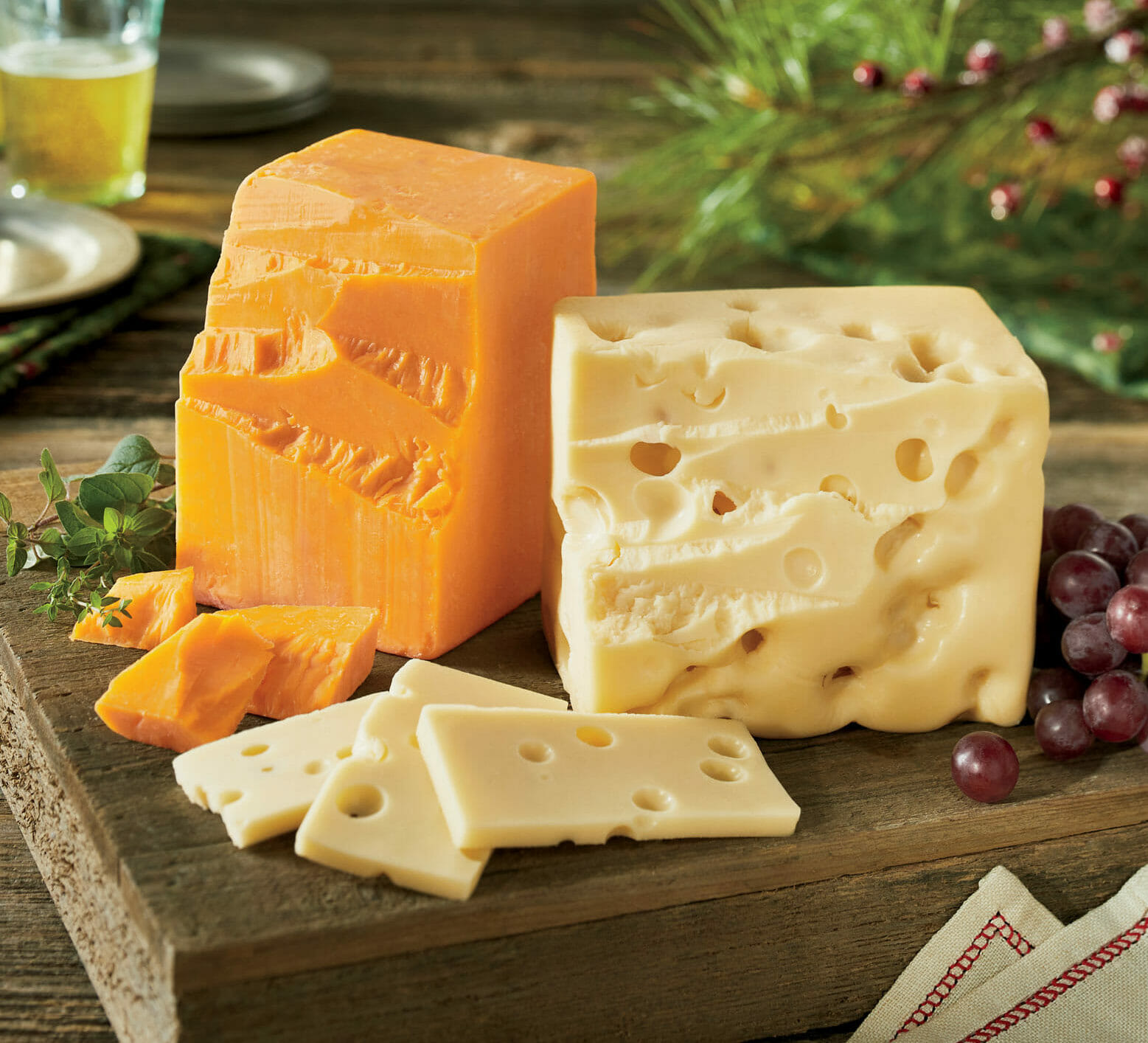

The Best Cheese for a Soufflé
While a soufflé is light and airy, you want it accented with a bit of pungency that announces the cheese is there. So this is not the time for that mellow, easy-nibbling Havarti or Muenster. You want a cheese with some age and some tang.
Most classic soufflé recipes specify Gruyère, as Gruyère cheese is often favored for its excellent melting properties and ability to create a light and fluffy soufflé. It adds a creamy and nutty flavor while contributing to a desirable rise in the soufflé.
Emmental, or any Swiss, cheese, known for its distinctive holey appearance, is another cheese that melts well and can help achieve a fluffy texture in a soufflé. It has a mild and nutty flavor that pairs nicely with various ingredients.
Many chefs love a sharp Cheddar cheese soufflé. While it may not be as commonly used as some other cheeses in soufflés, Cheddar can still contribute to a flavorful and satisfying dish due to is distinct, sharp, and tangy flavor. Additionally, a mature, aged Cheddar has terrific melting qualites.
Other assertive options like Blue cheese, or any variety of smoked cheese, are among the best cheeses for a soufflé, and a goat cheese soufflé is fantastic.
Many recipes also call for grated Parmesan, but that’s more of a seasoning applied to the soufflé pan after buttering. The real heavy lifting, flavor-wise, comes from the cheese that’s added to the soufflé itself.
So now that we’ve chosen the best cheese for our soufflé, let’s learn how to make it…


How to Make a Soufflé
To start with, you’ll need a soufflé mold: basically a tallish ceramic casserole 8 inches or so in diameter holding about 1-1/2 quarts. Butter the mold generously (with real butter, please), then add either finely grated Parmesan cheese or breadcrumbs (you know which we prefer). To make the soufflé:
- Make a basic white sauce (béchamel) of milk and flour, seasoned with salt and black pepper and, perhaps, a pinch of cayenne, dry mustard, or cream of tartar.
- Stir in egg yolks to make a very rich batter, then stir in your cheese.
- Fold in stiffly beaten egg whites. This adds air to the mixture, which provides the fluff and lift for which soufflé is famous.
- Pour egg mixture into prepared mold and place on center rack of the oven
- Bake at 375 degrees F until soufflé has risen nicely above the rim and has turned a rich golden brown, usually around 25-30 minutes.
No, the above instructions weren’t all that exact. We just wanted to give you an idea of how easy it is to make a cheese soufflé. There are lots of easy soufflé recipes out there, but none more famous than the cheese soufflé Julia Child made famous. Julia probably would have used Gruyère, but really any Swiss cheese will work if you want to save money and still get that nutty flavor.
Numerous delicious additions can enhance the flavor and texture of a cheese soufflé. Here are some “kitchen insider secrets” to consider:
- Herbs and spices: Adding herbs like chives, thyme, parsley, or dill can bring freshness and aromatic notes to the soufflé. Spices like nutmeg, paprika, or cayenne pepper can provide a subtle kick and depth of flavor.
- Vegetables: Sautéed or roasted vegetables can be wonderful additions to a cheese soufflé. Consider ingredients like spinach, as well as mushrooms, onions, bell peppers, or leeks. Make sure to cook and drain the vegetables properly before incorporating them into the soufflé mixture.
- Cooked meats: Adding cooked meats such as diced ham, bacon, or cooked chicken can provide a savory boost to the soufflé. Ensure that the meats are cooked and seasoned beforehand.
- Wine or alcohol: Adding a splash of white wine or a dash of sherry, brandy, or Madeira can add depth and complexity to the soufflé. Be cautious not to add too much liquid, as it can affect the texture of the soufflé.
- Nuts: Toasted and chopped nuts like walnuts, almonds, or pecans can provide a delightful crunch and add an interesting texture to the soufflé.
Important: Remember to strike a balance when adding additional ingredients, as too many or overly wet ingredients can affect the rise and texture of the soufflé. It’s recommended to chop or dice the additions into small, evenly-sized pieces for even distribution throughout the soufflé mixture.
Just remember two Pro Tips:
- Don’t peek! Once the soufflé is in the oven, DO NOT open the door. Let it develop that beautiful color.
- Cheese soufflé, like time, waits for no one. When it’s ready, get it to the table now, or risk collapse.


What to Serve with Cheese Soufflé
In a word, salad!
There’s nothing better with the light, airy texture and rich flavor of a cheese soufflé than the crunch and acidity of a salad. Keep it simple with romaine hearts (grilled if it’s the season; you can do it while the soufflé is in the oven), or mixed baby greens—especially something peppery like arugula. Skip the creamy dressing and serve a tangy vinaigrette with balsamic vinegar and olive or walnut oil.
Essentially, while your easy cheese soufflé isn’t really substantial enough to be a “main course”, you want it to be the star of the show. If you’d like to serve some meat, don’t spend a lot of time preparing some big roast or grilling steaks. Instead, offer some salumi (like prosciutto or salami) or other charcuterie…or crumble some bacon in the salad.


Some crusty French bread is also nice to serve with your soufflé. If you’d like to serve a soup, again, keep it simple. Stay away from creamy soups; in fact, the perfect accompaniment is a traditional tomato soup—the same one that goes with your grilled cheese sandwich.
If you’re serving wine, most whites will do nicely—think chardonnay or sauvignon blanc—as will a dry rosé. Champagne is perfect, or mimosas if you’re doing brunch. If you really prefer red wine, keep it light. Stay away from the big, tannic cabernets and syrahs and go with a pinot noir or Beaujolais.
Let your guests be impressed with your outstanding culinary skills; nobody needs to know how easy cheese soufflé really is to make.

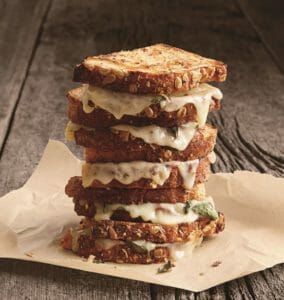
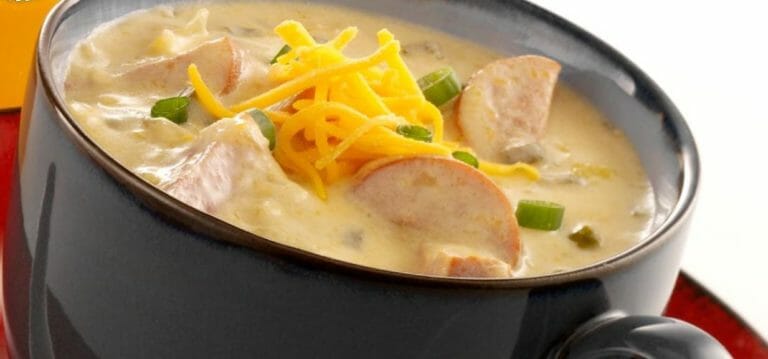
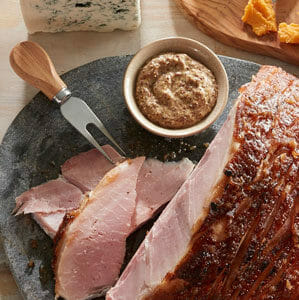
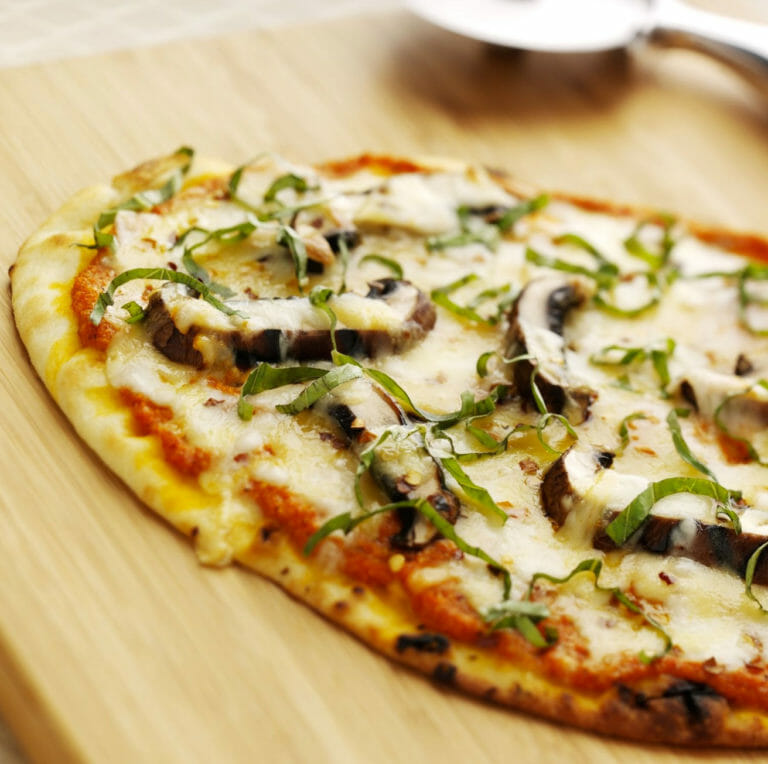
Thank you for the basic information…I can’t wait to try it!!!
Adel
I appreciate your recommendation to leave the oven door closed while it is baking. My wife is considering going to culinary school and she has been learning how to make different types of food. If she becomes a chef, we’d consider finding a commercial cooking equipment or something like that so she can make enough food for events or something like that. https://totalcommercialequipment.com.au/kitchen/cooking-equipment.html
I will love to try Cheese Souffle I have never mad one & I would like to try it out to how it will turn out